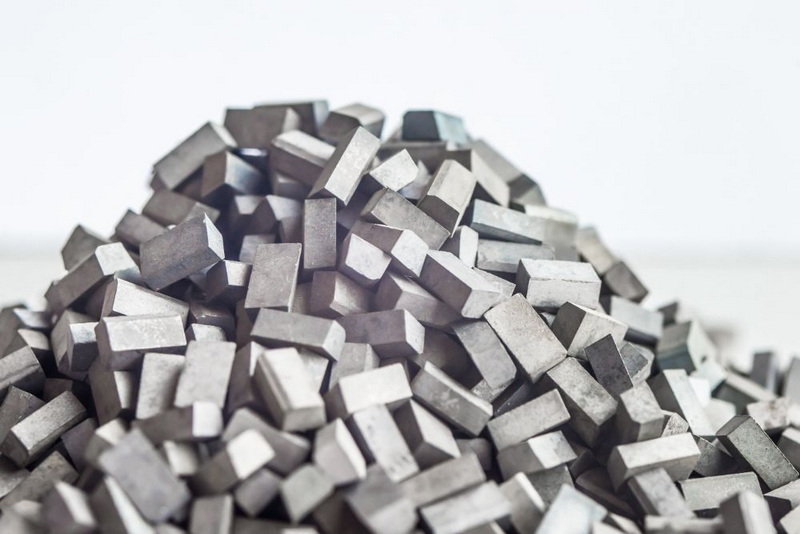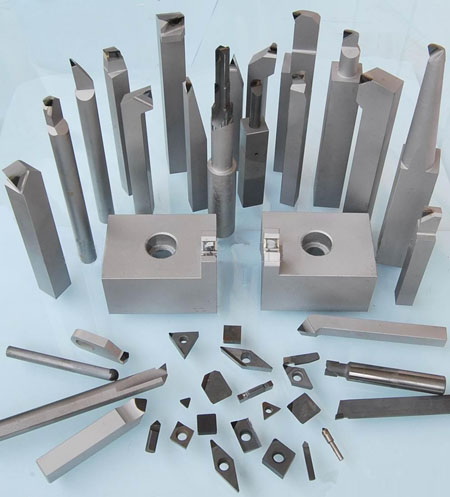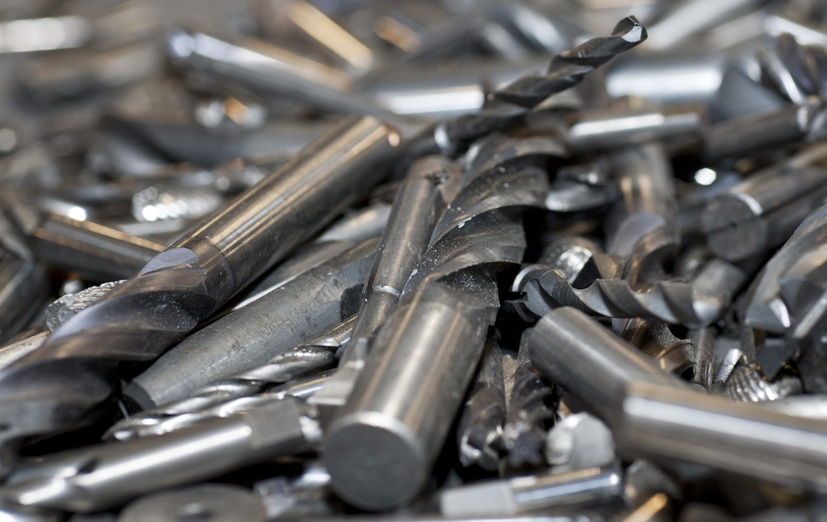Content Menu
● Composition of Tungsten Carbide
● Manufacturing Process
● Properties of Tungsten Carbide
● Applications of Tungsten Carbide
● Advantages of Using Tungsten Carbide
● Emerging Trends and Innovations
● Conclusion
● FAQ
>> 1. What are the main components of tungsten carbide?
>> 2. How is tungsten carbide manufactured?
>> 3. What are the key properties of tungsten carbide?
>> 4. In what industries is tungsten carbide commonly used?
>> 5. What are the advantages of using tungsten carbide over other materials?
● Citations:
Tungsten carbide is a remarkable compound that has gained significant attention across various industries due to its exceptional properties. This article delves into the composition, properties, applications, and manufacturing processes of tungsten carbide, providing a comprehensive overview of this versatile material.

Composition of Tungsten Carbide
Tungsten carbide (WC) is a chemical compound composed of equal parts tungsten (W) and carbon (C). The unique combination of these two elements results in a material that is incredibly hard and durable.
- Tungsten: A dense metal with a high melting point (approximately 3,422 °C or 6,192 °F), tungsten contributes to the hardness and strength of the compound.
- Carbon: When combined with tungsten, carbon enhances the material's wear resistance and toughness.
In many applications, tungsten carbide is not used in its pure form. Instead, it is often mixed with a binder metal, typically cobalt or nickel, which helps to improve its toughness and durability. The ratio of tungsten carbide to binder can vary depending on the intended application.
Manufacturing Process
The production of tungsten carbide involves several key steps:
1. Powder Preparation: Tungsten powder and carbon black are mixed in a specific ratio. This mixture is then heated in the presence of hydrogen at temperatures between 1,400 °C to 1,600 °C (2,550 °F to 2,900 °F) to form tungsten carbide powder.
2. Sintering: The tungsten carbide powder is combined with a binder metal (like cobalt) and compacted into the desired shape. This compacted mixture is then sintered at high temperatures, allowing the binder to melt and bond the tungsten carbide particles together.
3. Finishing: After sintering, the product may undergo additional processes such as grinding or polishing to achieve the desired surface finish and dimensions.
The sintering process typically involves four primary stages: powder preparation, blending, compacting, and sintering. In the first stage, the tungsten and carbon powders are prepared to the required size and purity. The blending stage involves mixing these powders in a predetermined ratio to form a homogeneous mixture. The compacting stage compresses this blended powder into a desired shape using a hydraulic press. Finally, during sintering, the compacted mixture is heated in a controlled environment until it fuses into a solid mass[2][5].
Properties of Tungsten Carbide
Tungsten carbide exhibits several remarkable properties that make it suitable for a wide range of applications:
- Hardness: It ranks between 9 and 9.5 on the Mohs scale, making it one of the hardest materials available. Only diamond surpasses it in hardness.
- Density: Tungsten carbide is approximately twice as dense as steel, contributing to its stability and strength.
- Wear Resistance: It can withstand extreme wear conditions, making it ideal for cutting tools and industrial applications.
- Thermal Stability: Tungsten carbide retains its hardness even at elevated temperatures (up to about 1,000 °C or 1,832 °F).
- Corrosion Resistance: While not completely immune to corrosion, tungsten carbide offers good resistance in various environments.
These properties make tungsten carbide particularly valuable in industries where durability and performance are paramount. For instance, its high hardness allows tools made from this material to last significantly longer than those made from traditional steel[1][4].
Applications of Tungsten Carbide
The unique properties of tungsten carbide make it invaluable across numerous industries:
- Cutting Tools: Tungsten carbide is widely used in manufacturing cutting tools such as drills, milling cutters, and saw blades due to its hardness and wear resistance. These tools can cut through difficult materials like steel and titanium efficiently.
- Mining Tools: Its durability makes it suitable for mining applications where tools are subjected to extreme conditions. Drill bits used in oil drilling and mining operations often incorporate tungsten carbide inserts for enhanced performance.
- Jewelry: Tungsten carbide has become popular in jewelry making, particularly for wedding bands due to its scratch resistance and durability. Its ability to maintain a polished finish makes it an attractive option for consumers looking for long-lasting jewelry.
- Industrial Machinery: Components like bearings, valves, and wear parts are often made from tungsten carbide because they require materials that can withstand harsh conditions without degrading quickly.
- Aerospace Industry: Tungsten carbide is used in aerospace components where high strength and durability are critical. Its ability to perform under extreme conditions makes it suitable for applications in jet engines and other aerospace technologies[3][6].

Advantages of Using Tungsten Carbide
Using tungsten carbide offers several advantages:
- Longevity: Tools made from tungsten carbide have a significantly longer lifespan compared to those made from conventional materials.
- Cost-Effectiveness: Although initial costs may be higher, the extended lifespan leads to lower replacement costs over time.
- Performance Efficiency: Tungsten carbide tools maintain their sharpness longer than traditional steel tools, leading to improved performance in machining operations.
Additionally, tungsten carbide's adaptability allows it to be engineered for specific applications by varying the proportions of its components or by adding other materials such as titanium or tantalum carbides for enhanced performance[10][12].
Emerging Trends and Innovations
As technology advances, new applications for tungsten carbide are continually being developed. Innovations include:
- Coatings: Tungsten carbide coatings are increasingly used on various components to enhance their wear resistance and longevity. These coatings can be applied through thermal spray processes that bond tightly with substrates[21].
- 3D Printing: The advent of additive manufacturing techniques has opened new avenues for utilizing tungsten carbide in complex geometries that were previously difficult or impossible to achieve through traditional methods[13].
- Sustainability Efforts: With growing environmental concerns, industries are focusing on sustainable practices. The recyclability of tungsten carbide makes it an attractive option for companies looking to reduce waste while maintaining high-performance standards[14].
Conclusion
Tungsten carbide stands out as an exceptional material due to its unique composition and outstanding properties. From cutting tools to jewelry, its versatility makes it an essential component across various industries. As technology advances and new applications emerge, the demand for tungsten carbide is likely to grow even further.

FAQ
1. What are the main components of tungsten carbide?
Tungsten carbide primarily consists of equal parts tungsten (W) and carbon (C), often combined with a metallic binder like cobalt or nickel for enhanced toughness.
2. How is tungsten carbide manufactured?
Tungsten carbide is produced by mixing tungsten powder with carbon black and heating it at high temperatures. The resulting powder is then compacted with a binder metal and sintered to form solid components.
3. What are the key properties of tungsten carbide?
Key properties include extreme hardness (9-9.5 on the Mohs scale), high density (twice that of steel), excellent wear resistance, thermal stability up to about 1,000 °C (1,832 °F), and good corrosion resistance.
4. In what industries is tungsten carbide commonly used?
Tungsten carbide is widely used in cutting tools manufacturing, mining equipment production, jewelry making, industrial machinery components, and aerospace applications.
5. What are the advantages of using tungsten carbide over other materials?
The advantages include longer tool life due to superior hardness and wear resistance, cost-effectiveness over time due to reduced replacement frequency, and improved performance efficiency in machining operations.
Citations:
[1] https://www.linkedin.com/pulse/what-advantages-tungsten-carbide-tooling-zzbettercarbide
[2] https://grafhartmetall.com/en/sinter-process-of-tungsten-carbide/
[3] https://www.samaterials.com/content/application-of-tungsten-in-modern-industry.html
[4] https://www.carbide-part.com/blog/application-fields-and-characteristics-of-tungsten-carbide/
[5] https://todaysmachiningworld.com/magazine/how-it-works-making-tungsten-carbide-cutting-tools/
[6] https://eurobalt.net/blog/2022/03/28/all-the-applications-of-tungsten-carbide/
[7] https://www.paganoni.it/en/articles-blog/tungsten-carbide-characteristics-applications-and-properties/
[8] https://www.bangerter.com/en/tungsten-carbide/manufacturing-process
[9] https://www.sollex.se/en/blog/post/about-cemented-tungsten-carbide-applications-part-1
[10] https://www.carbide-usa.com/top-5-uses-for-tungsten-carbide/
[11] https://www.zgcccarbide.com/news/Exploring-the-Benefits-and-Applications-of-Tungsten-Carbide-Inserts-in-Metallurgy-172.html
[12] https://www.mmc-carbide.com/us/technical_information/tec_guide/tec_guide_carbide
[13] https://www.thermalspray.com/why-is-tungsten-carbide-becoming-increasingly-popular/
[14] https://www.tungco.com/insights/blog/5-tungsten-carbide-applications/
[15] https://www.allied-material.co.jp/en/techinfo/tungsten_carbide/process.html
[16] https://www.durit.com/industries
[17] https://www.linkedin.com/pulse/exploring-benefits-tungsten-carbide-tooling-debra-cattle-gqfye
[18] https://www.psmindustries.com/yillik/tungsten-carbide-manufacturing-process
[19] https://www.itia.info/applications-markets/
[20] https://repository.up.ac.za/bitstream/handle/2263/24896/03chapter3.pdf?sequence=4
[21] https://www.asbindustries.com/coating-materials/carbide-coating-materials/tungsten-carbide-coatings
















